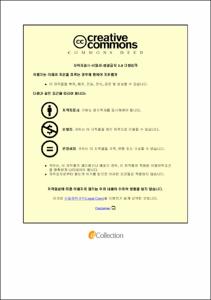광주·전남지역의 일부 n-헥산 노출 작업자의 소변 중 2,5-헥산디온 농도에 관한 연구
- Abstract
- 본 연구는 광주광역시·전남지역 일부 사업장을 대상으로 2018년부터 2023년까지 수행된 특수건강진단 결과 중 근로자의 소변 중 2,5-헥산디온 농도와 작업환경측정결과 중 공기 중 n-헥산 노출 농도 자료를 분석하였다. 총 321개소의 사업장에서 n-헥산 노출이 의심되어 특수건강진단을 실시한 5,765건 중에서 소변 중 2,5-헥산디온이 검출된 건은 1,380건으로 24%에 불과했다. n-헥산의 공기 중 노출농도를 측정한 작업환경측정결과를 분석한 결과, 총 측정건수 1,137건 중에서 n-헥산이 검출된 건은 98건(8.3%)에 불과했고, 1,039건(91.7%)에서는 n-헥산이 검출되지 않은 것으로 나타났다.
소변 중 2,5-헥산디온이 검출된 자료만 가지고 기하평균(GM)을 산출한 결과, 연도별로 0.26 mg/L에서 1.08 mg/L로 큰 차이를 보였고, 기하표준편차(GSD)도 1.53에서 3.79로 매우 큰 것으로 나타났다. 이것은 연도별로 소변 중 2,5-헥산디온의 농도 차이보다는 분석시 검출한계값을 다르게 설정했기 때문인 것으로 추정되었다. 특히 우리나라에서 소변 중 2,5-헥산디온 분석방법은 사용하는 가수분해방법은 n-헥산 비노출군에서도 소변 중 2,5-헥산디온이 검출되므로 정량한계를 고려하지 않고 자료를 분석하면 오류가 발생할 수 있음을 확인하였다. 따라서 소변 중 2,5-헥산디온의 기준치인 5 mg/L의 1/20인 0.25 mg/L 또는 1/10인 0.5 mg/L 이하를 제외한 나머지 데이터를 가지고 위험도를 분석하는 것이 더 타당할 것으로 보였다.
전반적으로 2.5-헥산디온이 검출된 사업은 50인 미만의 소규모 사업장이 전체의 약 56%를 차지하였고, 이들 사업장에서 상대적으로 더 높은 노출 농도 및 변동성이 관찰되었다. 그러나 2023년도의 자료에서는 300인 이상 사업장에서도 검출률이 36.0%에 달하였고, 평균 농도도 1.07 mg/L로 높게 나타나, 반드시 소규모 사업장에서만 높게 나타나는 것은 아니다.
소변 중 2,5 헥산디온 검출업종은 제조업이 대부분을 차지하였으며, 공정별로는 접착공정(1.2 mg/L), 도장공정(1.12 mg/L), 사출공정(0.98 mg/L)에서 높게 나타났다. 대부분의 측정치는 기준치인 5 mg/L를 초과하지 않았으나 일부 공정에서는 통계적으로 추정할 경우 노출기준을 초과할 수 있는 가능성이 있었다.
【주요어】2,5-헥산디온, n-헥산, 헥산의 생물학적 노출, 특수건강진단|This study analyzed special health examination data from 2018 to 2023 at selected workplaces in Gwangju Metropolitan City and the Jeonnam region, focusing on urinary 2,5-hexanedione levels in workers and airborne n-hexane exposure measured through work environment monitoring. Among 5,765 cases from 321 workplaces where n-hexane exposure was suspected, urinary 2,5-hexanedione was detected in only 1,380 cases (24%). Of 1,137 work environment monitoring samples, n-hexane was detected in just 98 cases (8.3%), while 1,039 cases (91.7%) showed no detectable levels.
The geometric mean (GM) of urinary 2,5-hexanedione in positive cases varied from 0.26 mg/L to 1.08 mg/L by year, with geometric standard deviations (GSDs) ranging from 1.53 to 3.79. These fluctuations likely resulted from differences in analytical detection limits rather than true exposure changes. Notably, the hydrolysis method used in Korea can yield detectable levels even in unexposed individuals, indicating that failing to consider quantification limits may cause analytical errors. Excluding data below 1/20 (0.25 mg/L) or 1/10 (0.5 mg/L) of the biological exposure index (5 mg/L) appears more appropriate for risk analysis.
Overall, 56% of workplaces with detected 2,5-hexanedione were small enterprises with fewer than 50 employees, where relatively higher exposure levels and variability were observed. However, in 2023, large enterprises with over 300 employees showed a 36.0% detection rate and an average concentration of 1.07 mg/L, suggesting that high exposure is not limited to small workplaces.
Most detected cases were in the manufacturing sector, with elevated concentrations in adhesive (1.199 mg/L), painting (1.124 mg/L), and injection molding (0.983 mg/L) processes. Although most samples did not exceed the 5 mg/L biological exposure index, certain processes may exceed this limit when considering statistical estimations.
【Keywords】2,5-Hexanedione, n-Hexane, Biological Monitoring of Hexane, Special Health Examination
- Issued Date
- 2025
- Awarded Date
- 2025-08
- Type
- Thesis
- Keyword
- 2,5-헥산디온; n-헥산; 헥산의 생물학적 노출; 특수건강진단
- Affiliation
- 한성대학교 대학원
- Department
- 대학원 기계시스템공학과
- Advisor
- 박두용
- Degree
- Master
- Publisher
- 한성대학교 대학원
- Appears in Collections:
- 기계시스템공학과 > 1. Journal Articles
- Files in This Item:
-
-
Download
 200000903272.pdf
기타 데이터 / 666.3 kB / Adobe PDF
200000903272.pdf
기타 데이터 / 666.3 kB / Adobe PDF
-
Items in Repository are protected by copyright, with all rights reserved, unless otherwise indicated.